eBOOK/PDF
No ads? No problem! You can download our tutorials in a printable PDF format or as an EPUB file, optimized for your tablet or eReader.
Descending Triangle
Descending Triangle Trading Strategy: Master Bearish Continuation Patterns.
The descending triangle is a bearish continuation pattern that often arises during a downtrend. Although descending triangles are frequently continuation patterns, they can sometimes show as reversal patterns at the end of an upswing.
We will learn about descending triangle patterns in this chapter, as well as trading tactics that may help you gain tremendously from them.
| Name: | Descending Triangle |
|---|---|
| Forecast: | Continuation Pattern |
| Trend prior to the pattern: | Downtrend |
| Opposite pattern: | Ascending Triangle |
| Accuracy rate: | 68% |
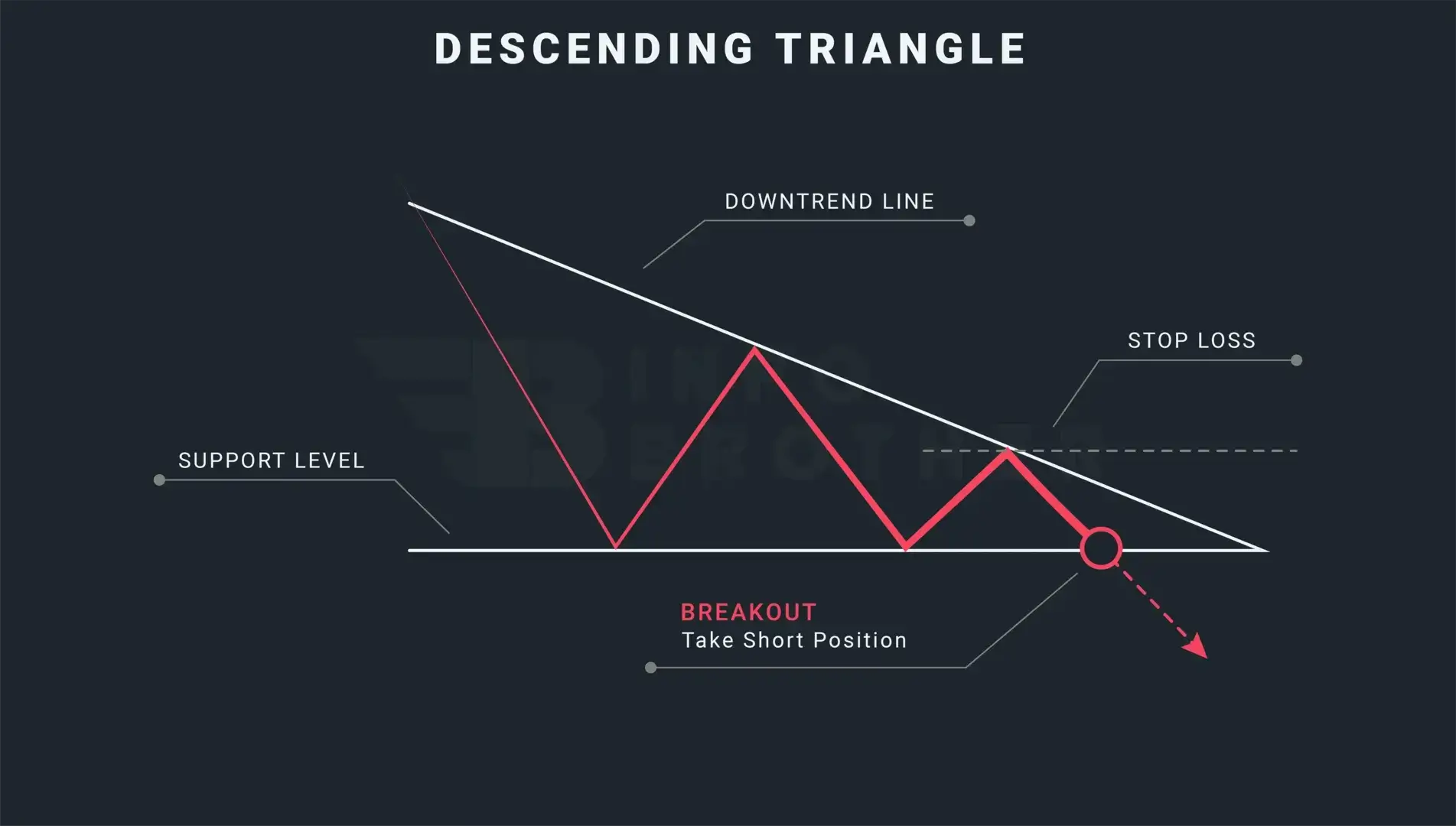
A descending triangle is a technical chart pattern. It is generated by price fluctuations that allow the creation of a horizontal line along the swing lows and a falling trendline along the swing highs. The two lines cross to form a triangle. Traders usually seek triangle breakouts. The breakout might come on the upside or the downside.
Descending triangles are also referred to as continuation patterns since the price generally breaks out in the same direction as the trend that existed prior to the triangle forming.
The position of the descending triangle with respect to the trend will indicate whether the trend will reverse or continue. At the height of an uptrend, a descending triangle might develop, suggesting that the upward impetus is fading before potentially changing direction. As a result, the location of the pattern is crucial.
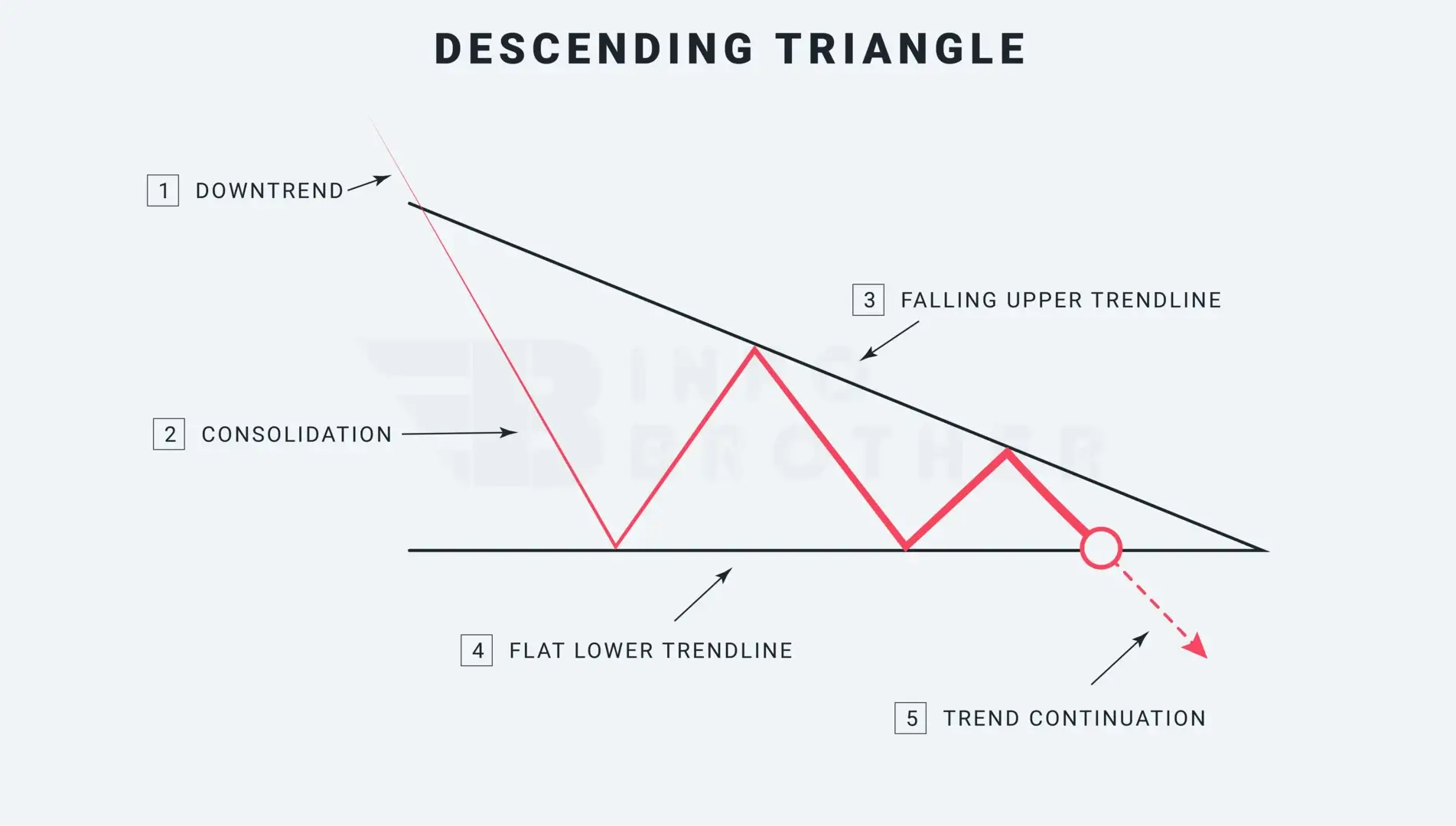
A descending triangle is commonly seen as a continuation pattern. This pattern is important for traders because of its high accuracy rate. If this pattern appears within an downtrend , the chances of the trend continuing are 98%.
We have five elements to consider in order to determine the pattern.
1. Downtrend:
Before the descending triangle occurs, the market must be in an Downtrend . If the trend is sideways or upward , the trader should avoid this pattern. The downswing preceding this pattern is significant.
2. Consolidation:
As the market enters the consolidation phase, the descending triangle pattern begins to take shape.
3. Falling upper trendline (resistance)
When the market is consolidating, draw the trend line by connecting the highs. This dropping trend line implies that sellers are steadily driving down the price, adding additional resistance to a bull market.
4. Flat bottom trendline (support)
Use the bottom trendline as a level of support . The price typically reaches this level and then bounces back till the breakthrough occurs.
5. Trend continuation:
The price breaks below the support level as a result of the breakout. Traders will confirm the pattern, and the downward trend will continue.
The descending triangle's trendlines must have at least two swing highs and two swing lows. However, a higher number of trendline contacts produces more consistent trading results.
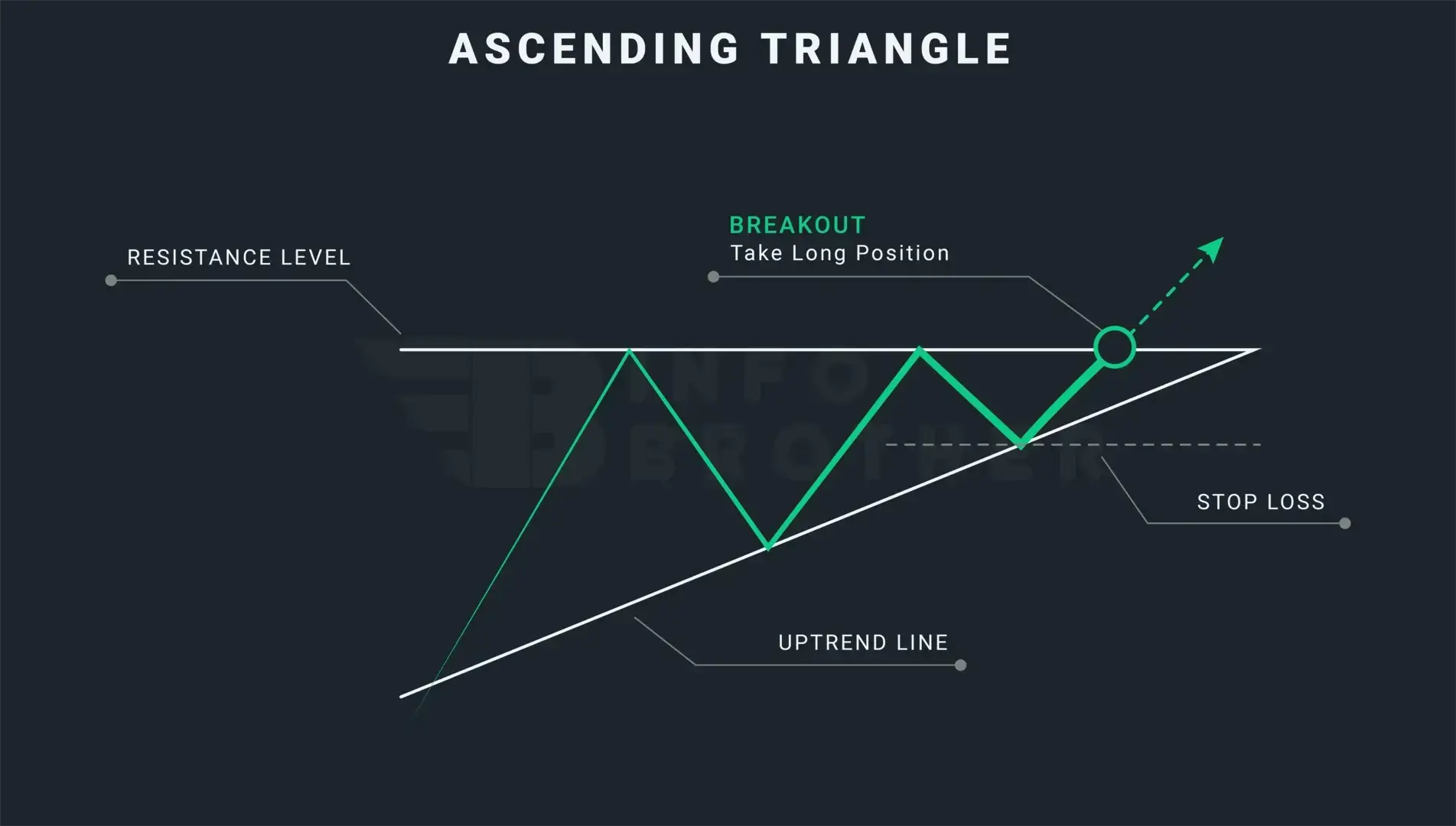
The Difference Between an Descending Triangle and a Ascending Triangle:
Both of these triangles are continuation patterns, yet they seem very different. The ascending triangle is defined by a flat upper resistance level and a rising lower trendline.
Read More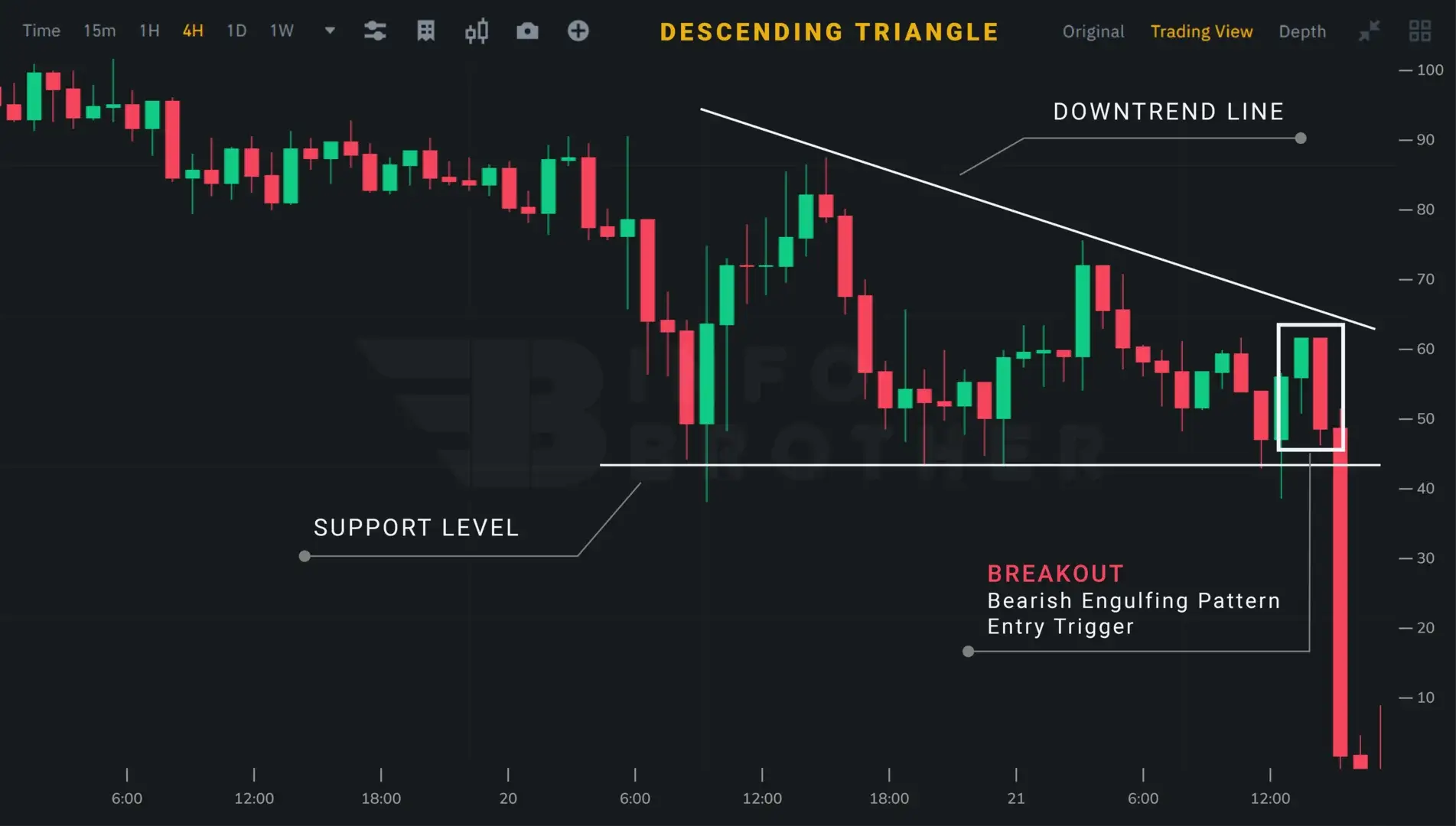
When a breakout occurs, traders enter the market. If the breakout occurs to the upside, buy/long; if the breakout occurs to the downside, short/sell. A stop-loss should be positioned just outside the pattern's opposing side. A stop-loss should be put slightly below the lower trendline if a long trade is executed on an upside breakout. A stop-loss should be put slightly above the upper resistance level if a short trade is executed on a downward breakout.
The primary issue with these patterns is the possibility of false breakouts. The price may move out of the pattern just to return to it, or it may even break out the opposite way. A trader can prevent this by waiting for the retest.
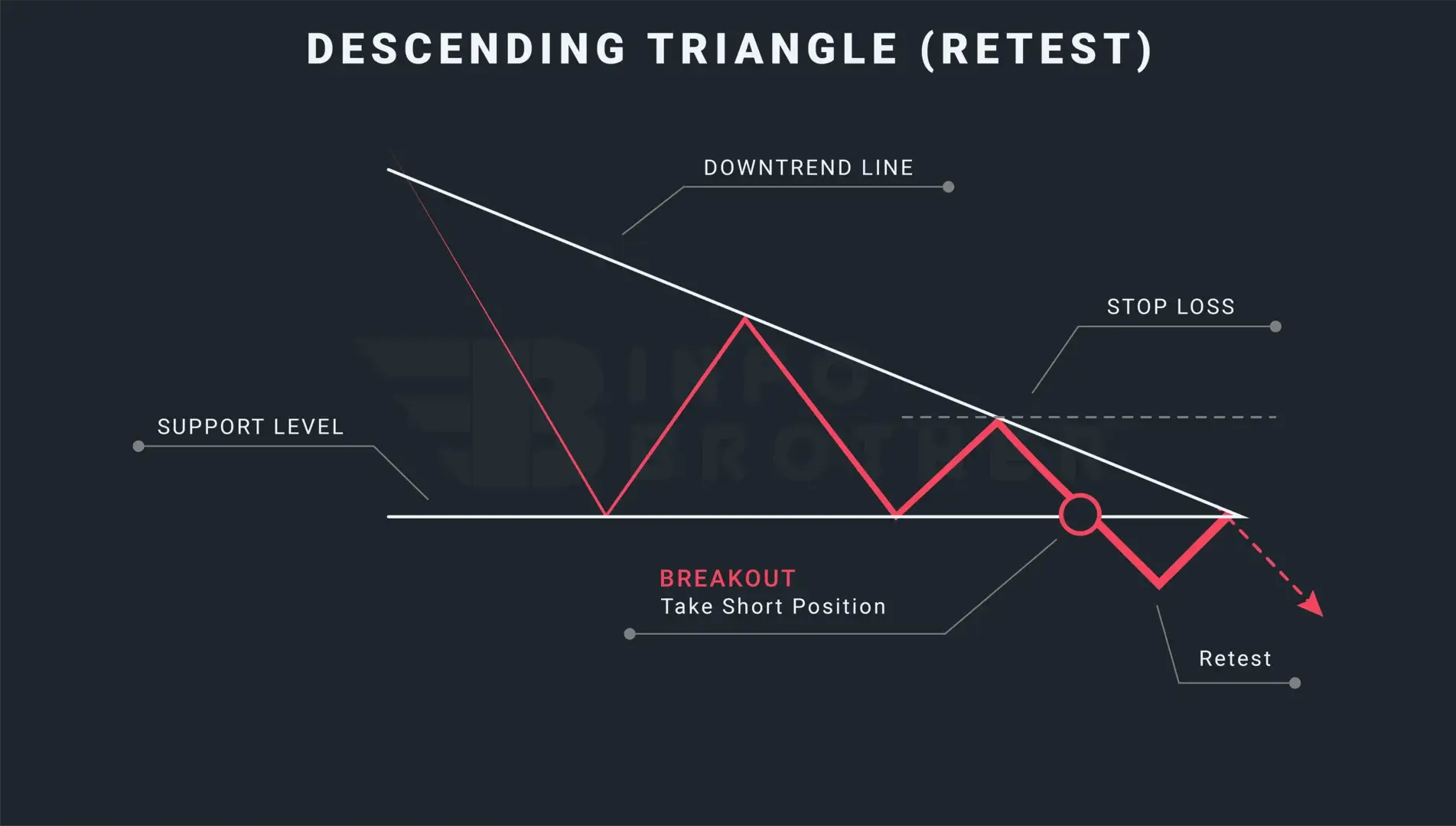
The process of the price returning to the level that the market previously broke is known as retesting. To avoid false breakouts, traders might wait for a retest, which occurs when the price breaks through the trendline and returns to retest the just passed resistance.

Sardar Omar
I did my hardest to present you with all of the information you need on this subject in a simple and understandable manner. However, if you have any difficulties understanding this concept or have any questions, please do not hesitate to ask. I'll try my best to meet your requirements.
Disclaimer:This material is provided purely for educational purpose and is not intended to provide financial advice.
